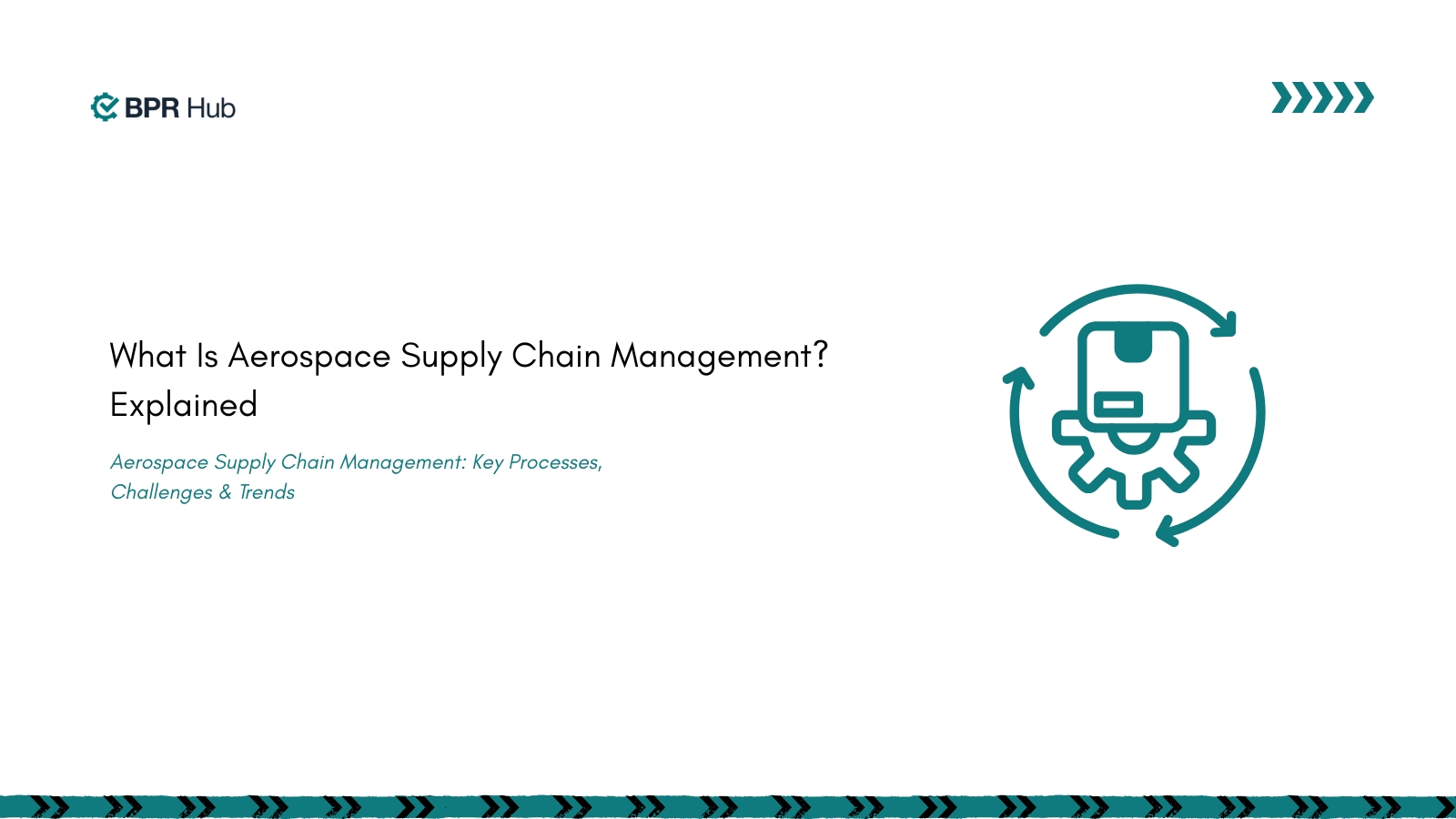The aerospace supply chain industry faces unprecedented challenges as supply chain disruptions could cost airlines more than $11 billion in 2025, according to the International Air Transport Association (IATA) and Oliver Wyman. With the commercial aircraft backlog reaching a historic high of over 17,000 aircraft in 2024, understanding aerospace supply chain management has never been more critical for operations managers, compliance officers, and industry professionals seeking to navigate this complex landscape.
Aerospace supply chain management represents the comprehensive coordination of suppliers, manufacturers, distributors, and service providers across the global aviation ecosystem. This sophisticated network encompasses everything from raw material sourcing to final aircraft delivery, requiring stringent quality controls, regulatory compliance, and risk mitigation strategies that distinguish it from other manufacturing sectors.
Understanding the Aerospace Supply Chain
What Makes the Aerospace Supply Chain Unique?
The aerospace supply chain operates under extraordinary constraints that set it apart from traditional manufacturing networks. Unlike consumer goods, aircraft components must meet rigorous safety standards, undergo extensive testing, and maintain traceability throughout their operational lifetime, often spanning decades.
According to a recent Deloitte supply chain study, 78% of respondents believe digital solutions boost visibility and transparency throughout the supply network. This emphasis on transparency reflects the industry's zero-tolerance approach to component failures, where a single defective part can ground entire fleets.
The aerospace and defense supply chain faces unique pressures from regulatory bodies like the Federal Aviation Administration (FAA), European Aviation Safety Agency (EASA), and international standards organizations. These agencies mandate comprehensive documentation, testing protocols, and certification processes that can extend component development cycles from months to years.
Key characteristics that distinguish aerospace supply chains include:
- Extended product lifecycles: Aircraft remain in service for 20-30 years, requiring ongoing parts availability and support
- Complex multi-tier supplier networks: Major aircraft programs involve thousands of suppliers across multiple countries
- Stringent quality requirements: Zero-defect tolerance and comprehensive testing protocols
- Regulatory oversight: Multiple international agencies governing design, manufacturing, and maintenance standards
Core Processes in Aerospace Supply Chain Management
Procurement and Supplier Selection
Aerospace supply chain management begins with sophisticated procurement processes that balance cost, quality, and risk considerations. Unlike traditional manufacturing, aerospace procurement involves extensive supplier qualification programs that can take years to complete.
Supplier selection criteria extend far beyond price considerations to encompass technical capabilities, quality systems, financial stability, and cybersecurity posture. The Department of Defense (DoD) Cybersecurity Maturity Model Certification (CMMC) requirements have created a top-down mandate that flows from federal agencies to prime contractors to their entire supplier networks.
Modern procurement strategies emphasize supplier diversification to reduce risk and improve resilience. Aerospace companies focus on friend-shoring practices or strategies to diversify sourcing regions for metals like titanium, reflecting geopolitical considerations that increasingly influence supplier selection decisions.
Logistics, Warehousing, and Inventory Control
Aerospace supply chain solutions require sophisticated logistics networks capable of managing high-value, time-sensitive components across global markets. Unlike consumer goods, aerospace parts often have limited shelf lives, require specialized storage conditions, and demand comprehensive tracking throughout their lifecycle.
Inventory management in aerospace balances competing priorities: minimizing carrying costs while ensuring component availability for production schedules and maintenance operations. The industry's just-in-time principles must accommodate the reality that some components have lead times measured in months or years.
Advanced digital technologies now stand at the center of modern aerospace supply chain management, bringing unprecedented visibility and control to complex supply operations. These systems enable real-time inventory tracking, predictive maintenance scheduling, and automated reordering based on consumption patterns.
Maintenance, Repair, and Overhaul (MRO) Operations
MRO operations represent a critical component of aerospace supply chain management, supporting the continued airworthiness of aircraft throughout their operational lives. These operations require immediate access to certified parts, specialized tools, and qualified personnel.
Digital twin technology allows supply chain managers to create virtual replicas of physical assets and processes, enabling aerospace industry teams to simulate different scenarios, identify potential risks, and optimize inventory management without disrupting actual operations.

Aerospace Supply Chain Challenges
Global Disruptions and Material Shortages
The aerospace supply chain faces unprecedented volatility from global disruptions that threaten production schedules and operational continuity. The situation is further exacerbated by the competing demands of original equipment manufacturers (OEMs) needing parts for new builds and maintenance providers seeking the same components for repairs and overhauls.
Material shortages affect critical aerospace components, including semiconductors, titanium, aluminum, and specialized alloys. These shortages stem from geopolitical tensions, natural disasters, pandemic aftereffects, and increased demand from the recovery in commercial aviation.
According to Roland Berger's 2025 aerospace supply chain survey, at 65%, personnel shortages were the most commonly cited challenge, with little change compared to 2024. This workforce shortage compounds material availability issues by limiting production capacity across the supply network.
Regulatory and Compliance Pressures
Aerospace and defense supply chain operations must navigate an increasingly complex regulatory environment that spans multiple jurisdictions and standards organizations. Compliance requirements continue to evolve, demanding constant adaptation of supply chain processes and documentation systems.
Key regulatory challenges include international standards harmonization, cybersecurity mandates, environmental regulations, and export controls. For aircraft manufacturers, noncompliance means more than lost contracts – it represents a serious national security risk.
Cybersecurity and Data Integrity Risks
Aerospace supply chain management increasingly confronts sophisticated cybersecurity threats that target both operational technology and sensitive intellectual property. Because supply chain systems have become digital, malware, ransomware, and other forms of cyberattacks are now part of modern supply chain warfare.
The distributed nature of aerospace supply chains creates multiple attack vectors for cybercriminals and nation-state actors. Critical cybersecurity challenges include supply chain infiltration, intellectual property theft, operational disruption, and data integrity concerns.
Aerospace Supply Chain Solutions and Best Practices
Digital Transformation and AI-Driven Visibility
Modern aerospace supply chain solutions leverage artificial intelligence and machine learning to enhance visibility, predict disruptions, and optimize operations. According to Roland Berger's findings, the majority of companies (65%) already use or plan to use AI and other innovative software tools, with use cases focusing on quality inspection and cybersecurity.
AI applications in aerospace supply chain management include predictive analytics, quality assurance, supply risk assessment, and inventory optimization. Cloud-based platforms have become the backbone of aerospace supplier collaboration, enabling real-time communication between original equipment manufacturers, tier-1 suppliers, and smaller vendors across different time zones and geographical locations.
Supplier Collaboration and Risk Management
Effective aerospace supply chain management services emphasize collaborative partnerships that extend beyond traditional buyer-supplier relationships. These partnerships focus on shared risk management, joint technology development, and integrated planning processes.
With enhanced visibility into their supply chain network, aerospace manufacturers can simulate scenarios and conduct table-top exercises to evaluate their preparedness and objectively assess the true resilience of their supply chain.
Sustainability and Green Supply Chain Practices
The aerospace industry increasingly integrates sustainability considerations into supply chain in the aerospace industry management, driven by regulatory requirements and stakeholder expectations. Boeing is exploring the use of biofuels and electric propulsion systems in its aircraft, while Airbus has set a target of reducing its carbon emissions by 50% by 2030.
Aerospace and Defense Supply Chain Dynamics
How Defense Contracts Influence Aerospace Logistics
The aerospace and defense supply chain operates under unique constraints imposed by government contracting requirements and national security considerations. Defense contracts often specify domestic sourcing requirements, security clearance obligations, and specialized compliance protocols that influence supply chain design.
Companies that cannot demonstrate CMMC compliance for handling controlled unclassified information simply cannot bid on DoD contracts, creating significant barriers for smaller suppliers seeking defense business.
Dual-Use Technology and Security Protocols
Dual-use technologies present unique challenges for aerospace supply chain management, requiring a careful balance between commercial efficiency and national security protection. These technologies often have both civilian and military applications, triggering export control regulations and security protocols.
Emerging Trends in Aerospace Supply Chain Management
Friend-Shoring and Regional Resilience
Aerospace supply chain solutions increasingly emphasize regional supplier networks and "friend-shoring" strategies that prioritize suppliers in allied nations. This approach balances cost efficiency with supply security, reducing dependence on potentially unstable regions.
Regional resilience strategies include diversified supplier bases, strategic stockpiling, local content requirements, and allied nation partnerships.
Smart Factories and IoT Integration
Industry 4.0 technologies transform aerospace supply chain management through smart manufacturing systems that integrate Internet of Things (IoT) sensors, artificial intelligence, and robotics. Smart factories use artificial intelligence to predict maintenance needs before problems arise.
IoT integration enables real-time monitoring, predictive maintenance, quality control, and energy optimization across aerospace manufacturing operations.
Agile and Predictive Supply Chain Models
Modern aerospace supply chain management services adopt agile methodologies that enable rapid response to changing market conditions and customer requirements. These models emphasize flexibility, collaboration, and continuous improvement through modular design, cross-functional teams, rapid prototyping, and continuous feedback mechanisms.
Choosing the Right Aerospace Supply Chain Management Services
Factors to Consider When Partnering with Providers
Selecting appropriate aerospace supply chain management services requires careful evaluation of provider capabilities, industry expertise, and technological sophistication. Critical evaluation factors include industry experience, technology capabilities, global reach, financial stability, and compliance expertise.
Benefits of Integrated Supply Chain Solutions
Integrated aerospace supply chain solutions provide comprehensive visibility and control across complex supplier networks, enabling organizations to optimize performance while maintaining compliance with industry requirements through end-to-end visibility, risk mitigation, cost optimization, regulatory compliance, and supplier collaboration.
How BPRHub Helps with Aerospace Supply Chain Management
BPR Hub provides comprehensive AI-powered solutions that enable aerospace organizations to achieve world-class quality performance.
AI QCG for Aerospace - Powered by Octo
BPR Hub's AI QCG (Quality Compliance Grid) for Aerospace transforms compliance management. Octo, your AI-powered compliance assistant, understands AS9100D, ISO 9001, FAA, and EASA requirements.
With Octo for Aerospace, you can:
- Instantly locate critical aerospace documents and supplier certifications
- Get guided workflows for corrective actions and risk assessments
- Ask compliance questions in plain English or technical terms
- Check audit readiness with real-time compliance scores
Comprehensive Aerospace Solutions
Our AI-powered platform delivers connected compliance management across aerospace standards, providing real-time answers for AS9100 certification success.
Transform Your Aerospace Quality Management with BPRHub.
📍 Book a Demo
📧 hello@bprhub.com
Key Takeaways
→ Digital transformation is essential: AI-driven analytics and IoT integration provide the visibility and predictive capabilities necessary for modern aerospace supply chain management
→ Personnel shortages persist: With 65% of companies citing workforce shortages as their primary challenge, investment in training and development is critical for operational success
→ Supplier collaboration drives resilience: Multi-tier visibility and integrated planning systems enable proactive risk management and improved operational efficiency
→ Regulatory compliance complexity increases: CMMC requirements and international standards demand sophisticated compliance management systems and specialized expertise
→ Sustainability integration accelerates: Environmental considerations increasingly influence supplier selection, logistics optimization, and material sourcing decisions
→ Regional diversification strengthens security: Friend-shoring strategies and regional supplier networks reduce geopolitical risks while maintaining operational efficiency
Frequently Asked Questions
What are the main components of aerospace supply chain management?
Aerospace supply chain management encompasses procurement and supplier selection, logistics and inventory control, manufacturing coordination, quality assurance, regulatory compliance, and maintenance, repair, and overhaul (MRO) operations. These components work together to ensure safe, efficient, and compliant aircraft production and operations.
How do cybersecurity threats impact aerospace supply chains?
Cybersecurity threats pose significant risks to aerospace supply chains through potential intellectual property theft, operational disruptions, and data integrity compromise. Organizations must implement comprehensive security protocols and CMMC compliance measures to protect sensitive information and maintain operational continuity.
What role does AI play in modern aerospace supply chain management?
AI enhances aerospace supply chain management through predictive analytics for demand forecasting, automated quality inspection systems, real-time risk assessment, and optimization of inventory levels. Currently, 65% of aerospace companies use or plan to implement AI tools, primarily focusing on quality control and cybersecurity applications.
How do regulatory requirements affect aerospace supply chain operations?
Regulatory requirements significantly impact aerospace supply chains through mandatory compliance with safety standards (AS9100), cybersecurity protocols (CMMC), export controls (ITAR/EAR), and international aviation regulations. These requirements necessitate comprehensive documentation, specialized expertise, and sophisticated compliance management systems.
What are the key challenges facing aerospace supply chains in 2025?
Major challenges include material shortages and supply disruptions, potentially costing airlines over $11 billion, personnel shortages affecting 65% of companies, increasing cybersecurity threats, complex regulatory compliance requirements, and the need to balance efficiency with resilience in supply chain management.
How can companies build more resilient aerospace supply chains?
Building resilient aerospace supply chains requires diversifying supplier networks across multiple regions, implementing digital technologies for enhanced visibility, developing collaborative partnerships with key suppliers, investing in cybersecurity infrastructure, and creating comprehensive risk management frameworks that address both operational and strategic threats.
Get insights that help you minimize risks and maximize profits.
Dive deeper into manufacturing compliance with our free resources.
We get it, compliance can get tough.
Here are some additional resources to help.
We get it, compliance can get tough. Here are some additional resources to help.
Get updates in your inbox

.svg)
%20(1).svg)





%20(1).svg)

.avif)

